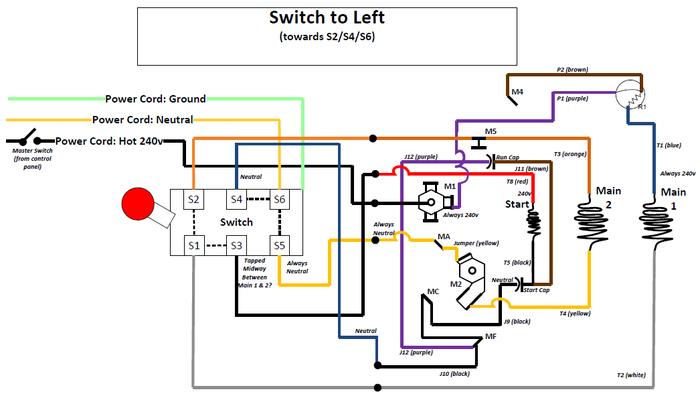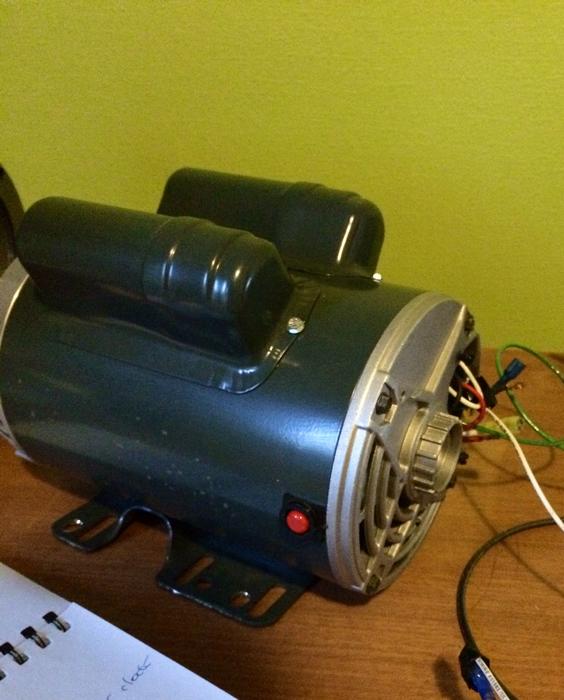adamrduley
Member
Hello,
I am having a very difficult time correctly wiring my grain mill motor to correctly reverse directions and would appreciate some help.
Here are the details:
The motor correctly works when the drum switch is in the left position (when looking at it from the handle side) but nothing happens when it is in the right position.
I'm very stuck and could use help!
Thank You!
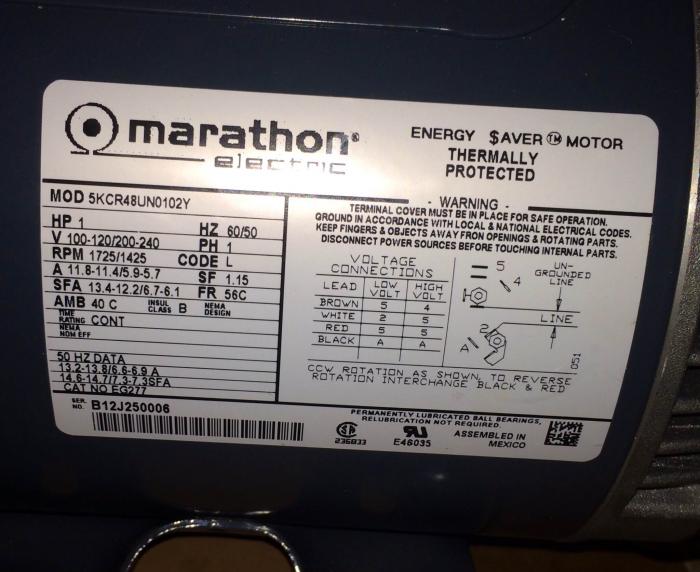
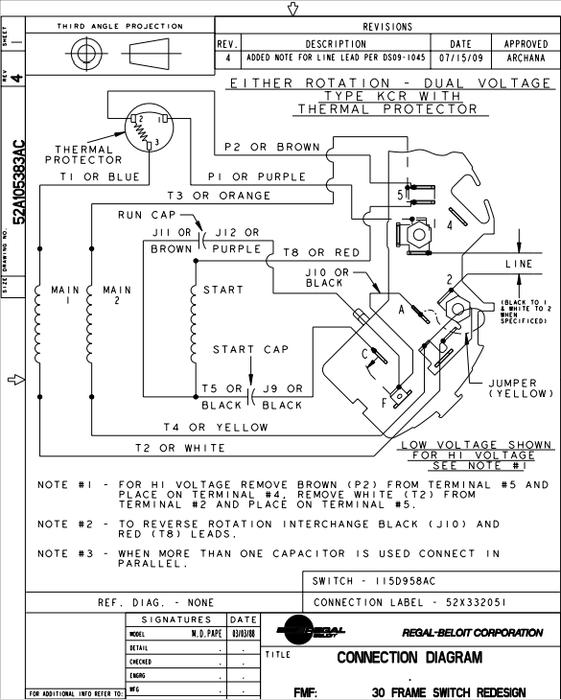

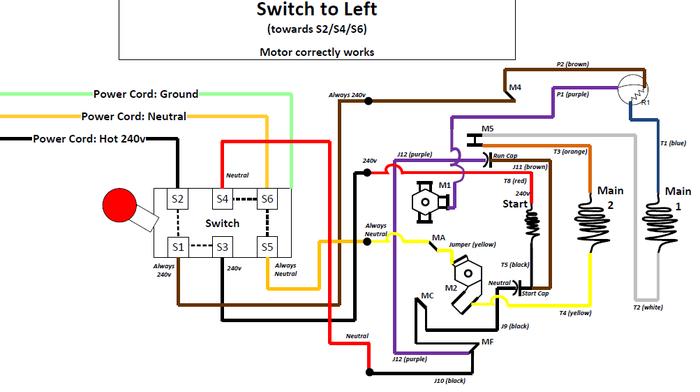
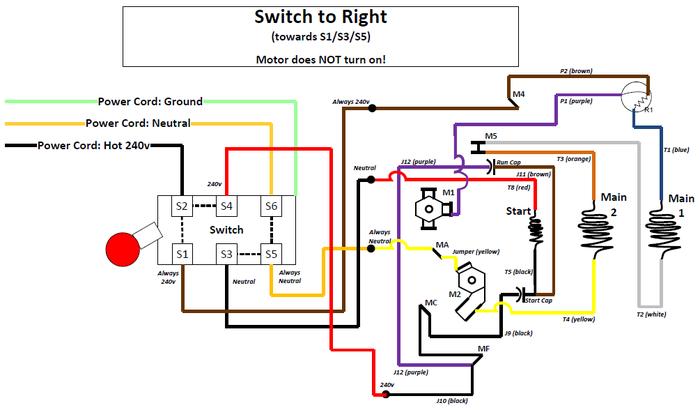
I am having a very difficult time correctly wiring my grain mill motor to correctly reverse directions and would appreciate some help.
Here are the details:
- Input Voltage = 240v (I live in Europe)
- Motor = Marathon 5KCR48UN0102Y (http://www.globalindustrial.com/site/images/universal/PEM/EG277-Conn.pdf?PID=7104034&CMP=AFC-cj)
- Drum Switch = Dayton 2X440A (http://www.grainger.com/product/DAYTON-Switch-2X440)
The motor correctly works when the drum switch is in the left position (when looking at it from the handle side) but nothing happens when it is in the right position.
I'm very stuck and could use help!
Thank You!







